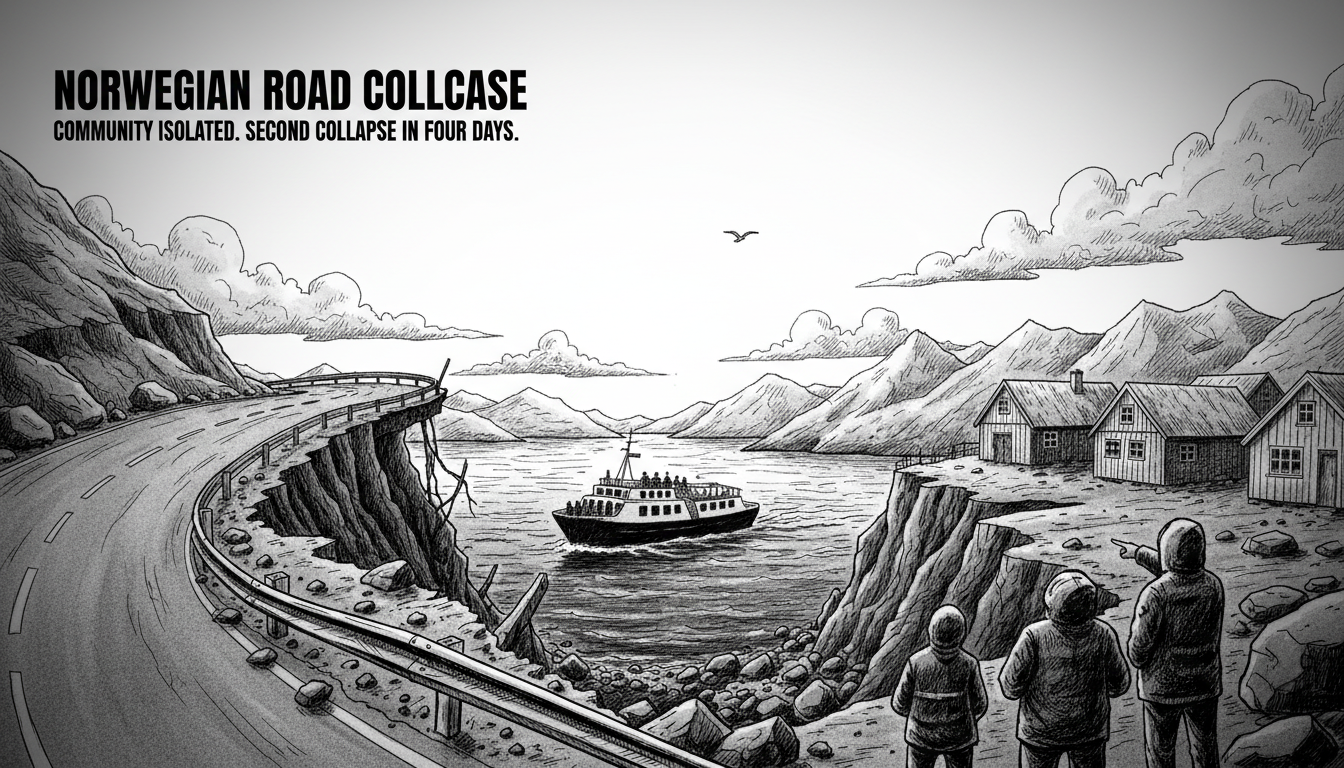A vital road in Øvre Eiker municipality collapsed for the second time in just four days on Saturday afternoon. The Hakavikveien road gave way mere hours after authorities had reopened it to traffic. The repeated landslides have left residents stranded and raised serious questions about infrastructure stability in the region.
The initial landslide occurred on Wednesday, isolating between 50 and 100 households. Crews worked to partially reopen the road by 3 PM Saturday, but their efforts proved temporary. Just two hours later, another 40-50 meters of roadway plunged into Lake Eikeren.
Mayor Adrian Tollefsen described the situation as deeply concerning for Hakavik residents. He joined engineers on Sunday to survey the damage from a Red Cross rescue boat. The inspection revealed dramatic destruction with sections of the road completely gone and the cliff face dropping straight into the water.
Tollefsen expressed understanding for affected residents and outlined emergency measures. The municipality has established a ferry service using MS Eikern between Vestfossen and Hakavik, operating three times daily. Officials are also working to open a smaller alternative road that could be ready by Wednesday.
The road previously ran along the outside of the cliff face on the western side of Lake Eikeren. The repeated collapses suggest underlying geological instability that may require more permanent solutions than temporary repairs.
This incident highlights the challenges Norway faces maintaining infrastructure in mountainous regions prone to erosion and landslides. Similar events have occurred across Scandinavia where steep terrain and weather conditions test engineering solutions.
For international readers, this demonstrates how Nordic communities manage emergency situations. The rapid deployment of ferry services and coordinated response between local government and rescue organizations shows the region's preparedness systems in action. Still, the repeated failure within days raises questions about initial risk assessment and repair quality.
The situation leaves residents facing extended disruptions to daily life, including commuting, school transport, and supply chains. Such isolation can last for weeks in remote Nordic communities where alternative routes may not exist.
Norwegian road maintenance crews now face the dual challenge of immediate emergency response and developing longer-term solutions for this critical transportation link. The coming days will test both the temporary measures and the community's resilience.

